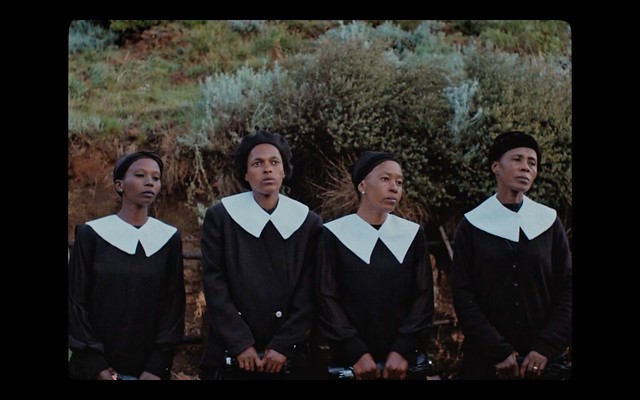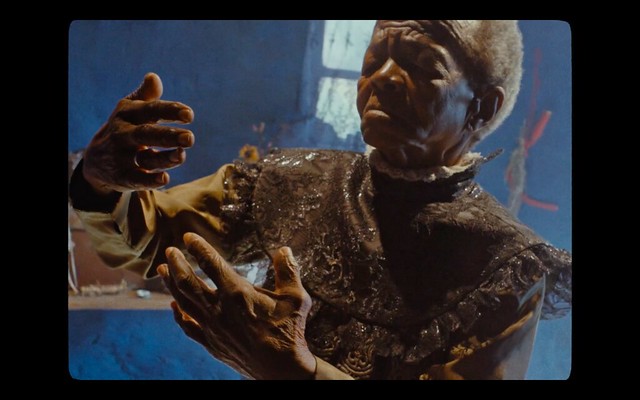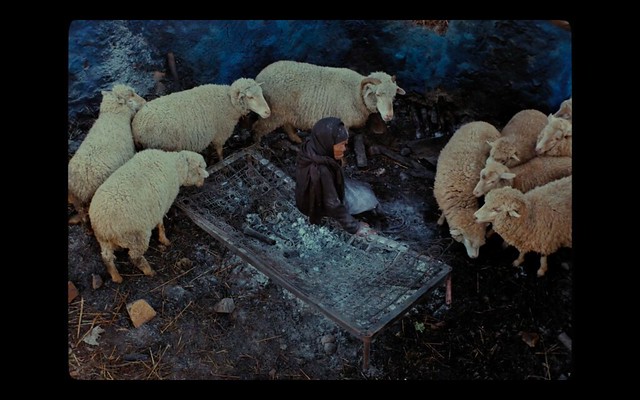








 Mantoa (Marytwala Mhlongo) lost all her family members over the years and now she is a recipient of her son's dead body. He died in an accident, presumably while working nearby mining field. Since she has no will to live anymore, she starts preparing for her death. She puts on a dress her husband gifted her long ago, lays down in her bed for death to come and take her away.
Mantoa (Marytwala Mhlongo) lost all her family members over the years and now she is a recipient of her son's dead body. He died in an accident, presumably while working nearby mining field. Since she has no will to live anymore, she starts preparing for her death. She puts on a dress her husband gifted her long ago, lays down in her bed for death to come and take her away.
But the death doesn't come. She tries to hire a local man to dig her grave for him. He refuses – it’s a bad omen for digging a grave for someone who is still living. She will need to do it herself. In the mean time, her village is under the threat of a dam being built nearby. All villagers will need to relocate because of their valley will be flooded. It means their ancestral burial ground will be flooded as well. As Mantoa objects to the dam project, pleading with the villagers about the importance of having their land, she unwillingly becomes a leader of a movement.
Mosotho filmmaker and visual artist Lemohang Jeremiah Mosese's This is Not a Burial, It's a Resurrection is a stunning film that defies easy categorization. Gorgeously shot in full frame by Pierre de Villiers with captivating score by Berlin based electronic composer Miyashita Yu, the film is a highly visual, aural experience that charts new frontier in its cinematic language. Only comparison I can think of is the work of Pedro Costa in its painterly, static framing and its visual poetry.
Steeped in Lesotho's natural beauty and its culture and history, the narrative moves languidly forward as our grief stricken, life beaten heroine picks herself up and fight against the village chief and the catholic priest who are resigned to give up the land, their heritage and dignity in the name of progress. Her refusal to relocate and her passionate speech about protecting their land and ancestral burial ground where all their families and ancestors are buried, the villagers finally come to her aide. They start cleaning up the cemetery and pressure the village leaders to reconsider.
The company which is behind the dam construction, uses scare tactics and violence to oppress the villagers. As their celebration turns into tragedy, the villagers are forced to relocate. It is again Mantoa, who has nothing else to lose, making the last stand.
It's Marytwala Mhlongo's weathered old face that speaks thousand words here. Her dignified stand in her forever black mourning dress stands out like a sore thumb in the frame mostly populated by giant Lesotho sky. Nature, however beautiful, doesn't let you forget that human are insignificant in Mosese's expressive framing. There are so many memorable scenes but Mantoa dancing in her best dress dancing with the dead - shot in close handheld camera, and women in black choir singing at Mantoa’s son’s funeral, stand out for me.
This is Not a Burial, It's a Resurrection signals the arrival of a major new voice in international cinema, one who is gifting us a unique cinematic language rooted in his tradition and culture. One of the year’s best.
Sundance winner This is Not a Burial, It's a Resurrection opens April 2, in virtual cinemas nationwide.